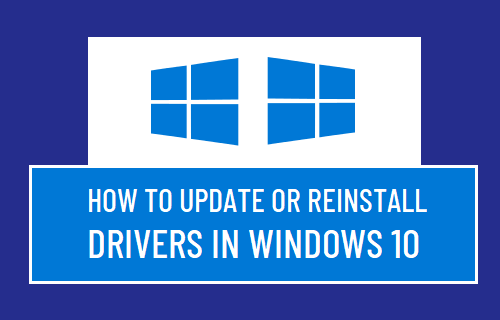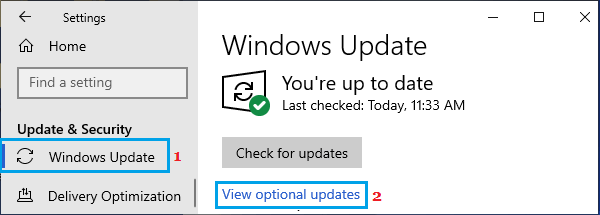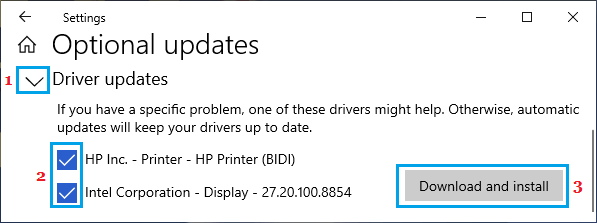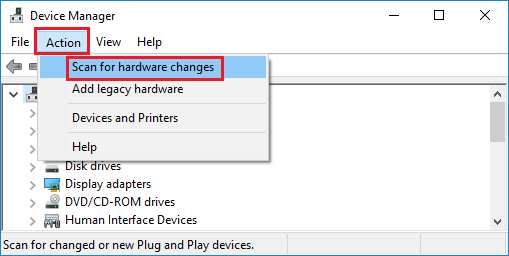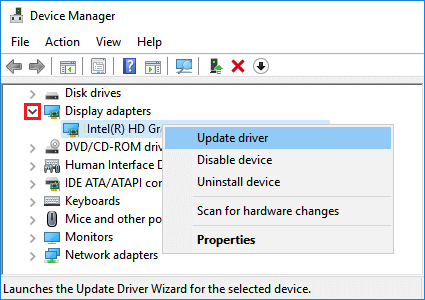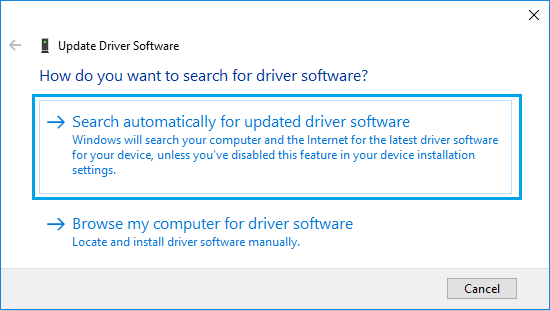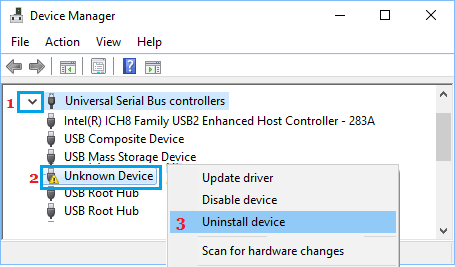Update Drivers in Windows 10
As you must be aware, the Windows 10 operating system is designed to automatically install and update drivers, as required for proper functioning of hardware components on the computer. However, sometimes the drivers for certain devices like the Network Card, Graphics Card and others can become outdated or get corrupted and create problems on the computer. In such cases, the standard troubleshooting practice is to manually update the device driver. If this does not help, the next step is to remove and reinstall the driver.
1. Download & Install Essential Driver Updates
Windows installs only the most essential Driver Updates on the computer and makes other drivers updates available under “Optional updates” section. If your computer is going through problems, installing optional drivers updates might help in fixing the problem. Go to Settings > Update & Security > select Windows Update in the left-pane. In the right-pane, click on View optional updates.
On the next screen, expand Driver updates entry, select Driver Updates that you want to install and click on Download and Install button.
Wait for updates to be installed on the computer.
2. Update Drivers Using Device Manager
If your computer is slowing down or going through problems, you can follow the steps below to make sure that all the devices installed on your compute are using the latest device drivers. Right-click on the Start button and click on Device Manager. On device Manager screen, click on Action > Scan for Hardware Changes.
Windows will scan your computer for Hardware changes and update device drivers (if required).
3. Update Specific Device Driver Using Device Manager
If the problem on your computer is related to a specific device (Sound Card, Graphics Card or any other device), you can follow the steps below to update the driver software for that specific device. Right-click on the Start button and click on Device Manager. On Device Manager screen, right-click on the Device that you want to update and click on Update Driver option.
Note: In most cases, you will be required to expand the relevant Device Entry to locate the Device to be updated. On the next screen, select Search automatically for updated driver software option.
Your computer will now begin to look for an updated version of the driver software. If an updated version is available, Windows will automatically download and install the latest available version of the driver. If Windows is unable to find the update, it will notify you with a “No updates were found” message.
4. Download Driver from Manufacturers Website
If Windows is unable to find updated drivers, you can check if a Driver Update is available on the manufacturers website. If an update is available, download the applicable Driver update on your computer. After the File is downloaded, Double-click on the downloaded File and follow the instructions to install the Driver Update on your computer.
5. Reinstall Drivers in Windows 10
All that is required to Reinstall the Driver for any hardware device on a computer is to remove the currently installed driver and restart the computer. Note: If the driver is corrupted, the device may be listed as “Unknown Device” on the Device Manager screen. Right-click on the Start button and click on Device Manager. On Device Manager screen, right-click on Unknown Device and click on Uninstall Device option.
After the Device is Uninstalled, Restart your computer. Once the computer restarts, Windows will automatically find and reinstall the latest updated driver software for this device.
How to Update BIOS in Windows 10 How to View Installed Updates in Windows 10
